Why the Classical Gardens of Suzhou Should Be on Every Traveler’s Bucket List
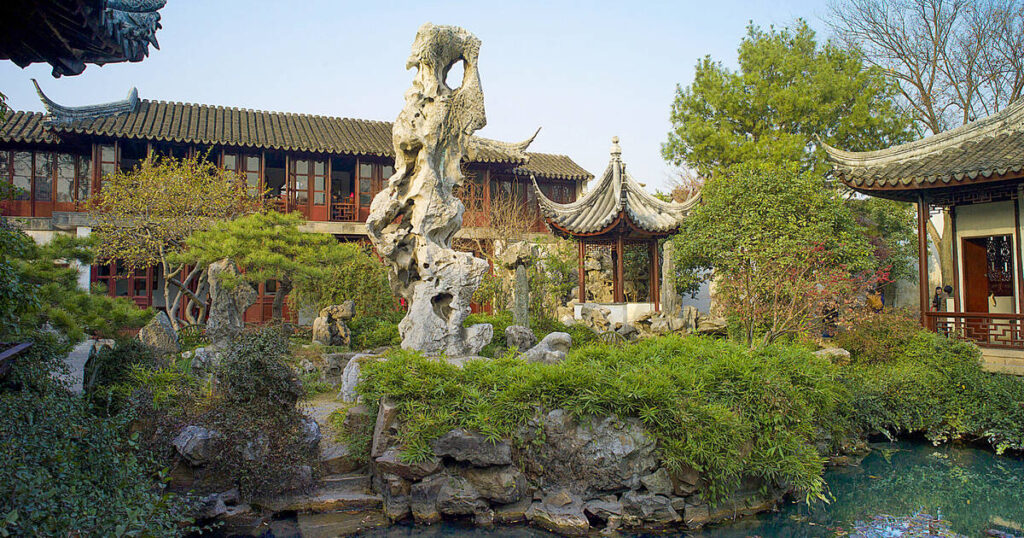
An Essential Guide to Visiting Classical Gardens Of Suzhou
Nestled in the heart of Jiangsu province, Suzhou is a city that whispers tales of ancient artistry through its stunning Classical Gardens, a UNESCO World Heritage site. These gardens are not merely patches of green; they are living masterpieces that marry nature with human ingenuity, offering visitors a serene escape into a world where every stone, tree, and pond tells a story. Imagine wandering through pathways lined with delicate flowers and ancient trees, where tranquil waters reflect the graceful silhouettes of pavilions and bridges. It’s a place where the chaos of modern life fades away, allowing you to immerse yourself in a timeless landscape of beauty and peace.
In this guide, we will take you on a journey through Suzhou’s most celebrated gardens, including the renowned Humble Administrator’s Garden and the serene Lingering Garden. Beyond the famous sites, we will also unveil hidden gems that offer a more intimate experience, free from the crowds. You’ll find practical tips for planning your visit, suggestions for the best times to explore, and insights into the cultural significance of these breathtaking spaces. Whether you’re a history enthusiast, a photography lover, or simply seeking tranquility, this guide will help you navigate the enchanting world of Suzhou’s Classical Gardens and ensure your visit is nothing short of extraordinary.
In This Guide
- An Essential Guide to Visiting Classical Gardens Of Suzhou
- The Rich History and Legends of Classical Gardens Of Suzhou
- Main Highlights: What You Absolutely Can’t Miss
- Planning Your Visit: A Practical Guide
- Tickets: Prices, Booking, and Tips
- How to Get There: A Complete Transportation Guide
- Local Cuisine and Accommodation Nearby
- Frequently Asked Questions
- Final Thoughts on Your Trip
The Rich History and Legends of Classical Gardens Of Suzhou
A Journey Through Time: The Classical Gardens of Suzhou
The Classical Gardens of Suzhou are not just landscapes of beauty; they are living narratives that weave together centuries of history, artistry, and culture. Recognized as a UNESCO World Heritage Site, these gardens are a testament to the artistic achievements of the Ming and Qing dynasties, reflecting the philosophies and aesthetics of traditional Chinese culture.
The Early Foundations: Song Dynasty (960-1279)
The origins of Suzhou’s gardens trace back to the Song Dynasty, a period marked by political stability and economic prosperity. During this time, wealthy scholars and officials began to construct private gardens as retreats from the bustling cities. These early gardens were designed to embody the principles of harmony with nature, featuring elements such as water, rocks, and plants that reflected the natural world.
One of the earliest recorded gardens from this era is the Zhuozheng Yuan (Humble Administrator’s Garden), which showcases the quintessential features that would define classical Chinese gardens for centuries to come.
Flourishing Creativity: Ming Dynasty (1368-1644)
The Ming Dynasty heralded a golden age of garden design in Suzhou. Scholars and artists sought to create spaces that were not only aesthetically pleasing but also rich in symbolic meaning. The gardens became a canvas for expressing philosophical ideas, with each element meticulously chosen to represent various concepts such as tranquility, balance, and the passage of time.
A famous legend associated with this period is that of Liu Yuxi, a poet who was said to have composed verses while wandering through the gardens, inspired by the beauty around him. His influence is evident in the poetry and artwork that adorn many of the garden pavilions, blending the lines between nature and artistic expression.
The High Point: Qing Dynasty (1644-1912)
The Qing Dynasty marked the pinnacle of garden architecture in Suzhou. This period saw the construction of the most renowned gardens, such as the Lingering Garden and the Master-of-Nets Garden, both exemplary of the high level of craftsmanship and design sophistication that characterized this era.
The Lingering Garden is particularly steeped in legend; it is said to have been built by a scholar who yearned for a tranquil space to cultivate his thoughts and writings. It features a layout that guides visitors through a poetic journey, with winding paths leading to hidden courtyards, each evoking a sense of discovery and contemplation.
Cultural Significance and Influence
Throughout history, the gardens have served as a source of inspiration for poets, painters, and philosophers. They represent the ideal of a harmonious relationship between humanity and nature, a theme that resonates deeply within Chinese culture.
Visitors often recount tales of wandering the gardens in search of enlightenment, echoing the experiences of countless scholars who walked these paths before them. The gardens have become synonymous with the pursuit of beauty and wisdom, drawing travelers from across the globe.
A Living Legacy
Today, the Classical Gardens of Suzhou continue to enchant visitors with their intricate designs and serene landscapes. Each garden tells a story, inviting exploration and reflection. While the most famous gardens may draw crowds, the lesser-known ones offer peaceful retreats where one can fully appreciate the artistry and tranquility that define Suzhou’s garden culture.
As you stroll through these historical landscapes, take a moment to immerse yourself in the legends and narratives that make each garden unique. The whispers of poets and scholars linger in the air, inviting you to become a part of this rich tapestry of history.
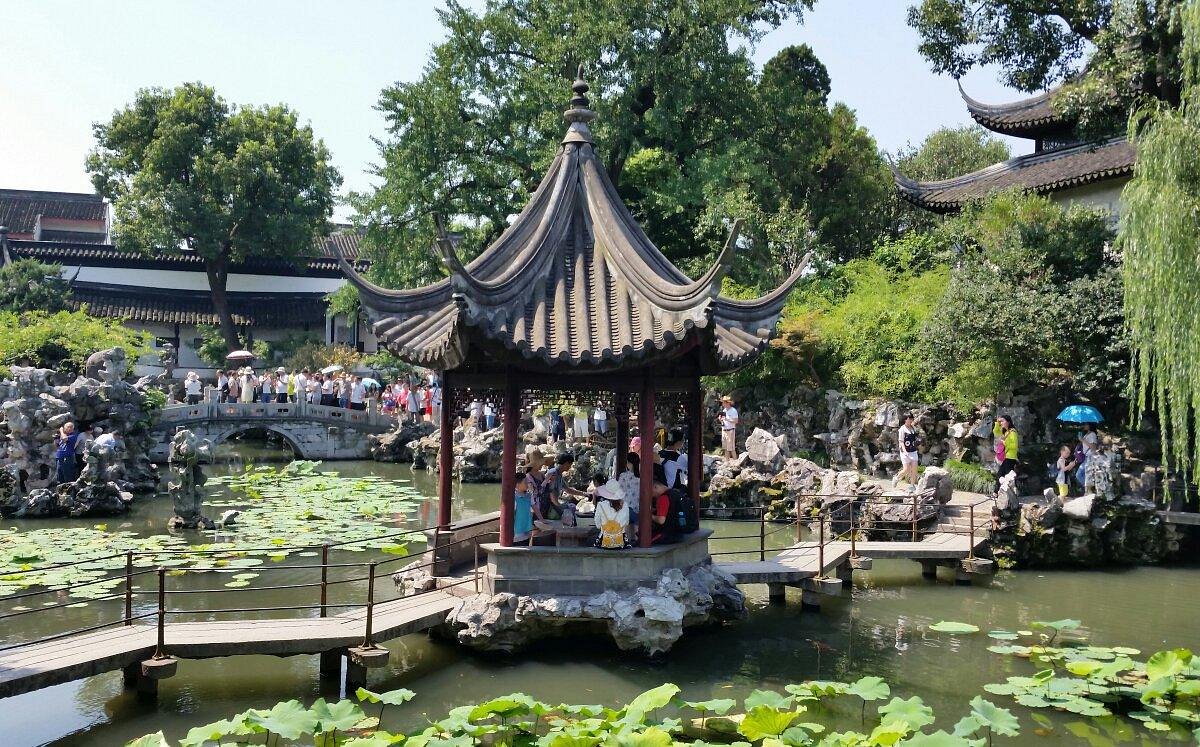
Classical Gardens Of Suzhou.
Main Highlights: What You Absolutely Can’t Miss
Humble Administrator’s Garden (拙政园)
As one of the largest and most renowned gardens in Suzhou, the Humble Administrator’s Garden captivates visitors with its exquisite layout and serene beauty. Spanning over 52,000 square meters, this UNESCO World Heritage site features a harmonious blend of water, rocks, and lush greenery that reflects the quintessential Chinese garden philosophy. Wander through its winding paths, cross charming bridges, and take in the picturesque pavilions that overlook tranquil ponds.
Practical Tip: Arrive early in the morning to experience the garden in relative peace before the crowds descend. Be sure to bring your camera; the early light beautifully illuminates the vibrant blossoms, especially in spring.
Lingering Garden (留园)
A masterpiece of classic Suzhou garden design, the Lingering Garden is known for its stunning rock formations and intricate architecture. Each section of the garden tells a story, with unique features such as the famous “Cloud-Capped Peak” and the “Peach Blossom Pavilion.” The deftly arranged plantings and reflective waters create a serene atmosphere perfect for contemplation.
Practical Tip: Look out for the tiny details in the architecture, such as the meticulously carved window frames and doorways. Guided tours are available, which can enrich your understanding of the garden’s history and artistry.
Master-of-Nets Garden (网师园)
Although smaller than some of its counterparts, the Master-of-Nets Garden exudes charm and tranquility. This garden is a perfect representation of the concept of “borrowed scenery,” where the surrounding landscape is incorporated into the garden’s design. Visitors will find delicate pavilions, intricate rock formations, and serene water features that invite relaxation and reflection.
Practical Tip: Visit during the evening when the garden is beautifully illuminated, creating a picturesque setting that’s perfect for romantic strolls or quiet contemplation.
Lion Forest Garden (狮子林)
Renowned for its unique rock formations resembling lions, the Lion Forest Garden offers a whimsical maze-like experience. This garden is a treasure trove of traditional Chinese landscape design, with its winding paths, tranquil ponds, and lush greenery. The dramatic rocks, carefully arranged, provide a stunning backdrop for photography enthusiasts.
Practical Tip: Don’t miss the chance to explore the hidden pathways and caves within the garden. Allow yourself to get lost in its tranquil ambiance—it’s part of the experience!
Canglang Pavilion (沧浪亭)
As one of the oldest gardens in Suzhou, Canglang Pavilion is famed for its elegant beauty and historical significance. With its picturesque lakes, ancient trees, and classical architecture, this garden provides a peaceful escape from the bustling city. The pavilion itself offers stunning views of the surrounding landscape and is perfect for quiet reflection.
Practical Tip: Bring a sketchbook or journal to capture the beauty around you. The calming environment makes it an ideal spot for creativity and introspection.
Ouyuan Garden (藕园)
Less frequented by tourists, Ouyuan Garden is a hidden gem that showcases the beauty of Suzhou gardens without the crowds. This garden is famous for its lotus ponds, fragrant flowers, and charming pavilions. The layout encourages exploration, providing numerous spots to relax and soak in the natural surroundings.
Practical Tip: Visit during the lotus blooming season in summer for a truly picturesque experience. The vibrant lotus flowers create a stunning contrast against the tranquil waters.
Quyuan Garden (曲园)
Quyuan Garden stands out for its unique design that combines natural landscapes with artistic elements. The garden features a series of ponds, winding pathways, and carefully positioned rocks that create a sense of harmony and balance. This spot is particularly popular among locals, providing an authentic glimpse into Suzhou’s garden culture.
Practical Tip: Engage with local residents who frequent the garden; they often share fascinating stories and insights about the garden’s significance and history.
Exploring the Classical Gardens of Suzhou is an unforgettable journey into Chinese culture and history. Whether you’re wandering through the renowned sites or uncovering hidden treasures, each garden offers a unique experience that resonates with tranquility and beauty.
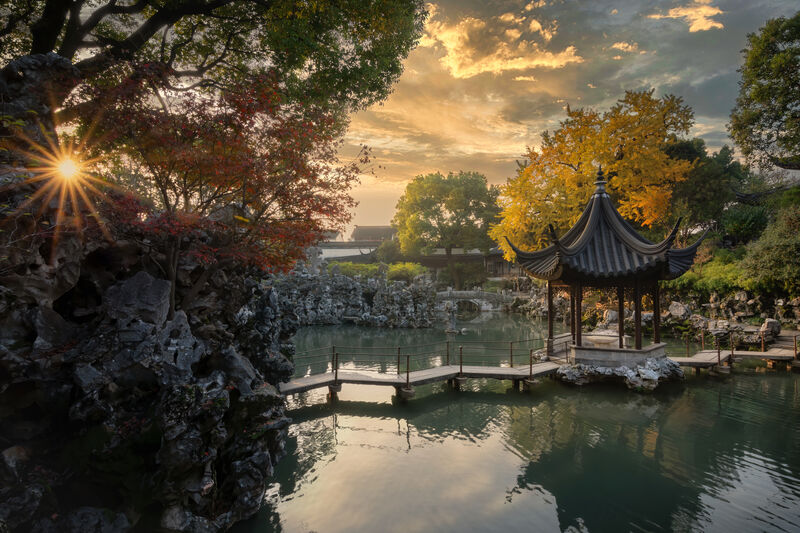
Classical Gardens Of Suzhou.
Planning Your Visit: A Practical Guide
Best Time to Visit
The Classical Gardens of Suzhou are beautiful year-round, but the best time to experience their full splendor is during the spring (April to May) and autumn (September to October). Spring brings vibrant blooms, making gardens like the Humble Administrator’s Garden and the Lingering Garden particularly picturesque. Autumn showcases the changing foliage, creating a breathtaking backdrop of reds and golds. Summer can be hot and crowded, while winter offers a serene, quiet atmosphere but with fewer flowers.
Recommended Itinerary
Day 1: Iconic Gardens
– Morning: Begin your exploration at the Humble Administrator’s Garden, the largest in Suzhou, where you can take in the intricate architecture and serene ponds.
– Afternoon: Head to the Lingering Garden, known for its stunning rockeries and lush greenery. Don’t miss the beautiful pavilions and the famous ‘Eight Views’ area.
– Evening: Enjoy dinner in one of the nearby traditional restaurants to sample local Suzhou cuisine.
Day 2: Lesser-Known Gems
– Morning: Visit the Master-of-Nets Garden, which is smaller but equally enchanting. Its design focuses on harmony between architecture and nature.
– Afternoon: Explore the charming Ouyuan Garden, famous for its bamboo groves and tranquil water features.
– Evening: Stroll along Pingjiang Road, a historic street lined with shops and cafes, perfect for a leisurely evening.
Day 3: Full Immersion
– Morning: Discover the Lion Grove Garden, known for its labyrinthine rock formations.
– Afternoon: Visit the Canglang Pavilion, one of the oldest gardens, which offers a less touristy experience.
– Evening: Wind down with a boat ride along Suzhou’s ancient canals, taking in the city’s beautiful architecture from the water.
Photography Tips
- Golden Hour: The best times for photography are early morning and late afternoon when the light is soft and golden. This enhances the colors of the gardens and reflections in the water.
- Avoid Crowds: If possible, visit on weekdays and early in the morning to capture the gardens without large crowds.
- Focus on Details: Capture the intricate designs of the garden architecture, as well as close-ups of flowers and plants to highlight the lushness of the gardens.
- Reflections: Utilize the water features in the gardens to create stunning reflection shots, especially in calm conditions.
What to Wear
- Comfortable Footwear: Expect to do a fair amount of walking, so wear comfortable shoes that can handle uneven terrain.
- Light Clothing: In warmer months, opt for light, breathable fabrics. In spring and autumn, layering is advisable as temperatures can fluctuate.
- Sun Protection: A wide-brimmed hat, sunglasses, and sunscreen are essential, especially during the summer months.
- Rain Gear: If visiting during the rainy season (June to August), pack a lightweight rain jacket or umbrella.
Insider Tips
- Explore Beyond the Famous Gardens: While the top gardens are stunning, don’t overlook smaller gardens like the Quyuan Garden and the Canglang Pavilion for a quieter experience.
- Guided Tours: Consider joining a guided tour to learn about the rich history and cultural significance of the gardens. Many tours offer insight into the artistry behind the garden designs.
- Timing is Key: If you want a peaceful experience, aim to visit gardens early in the morning or later in the afternoon when most day-trippers have left.
- Enjoy Local Snacks: Don’t miss the chance to try local snacks from nearby vendors, such as soup dumplings and sweet rice cakes, to enhance your cultural experience.
- Stay Hydrated: Bring a bottle of water, especially in the warmer months, to stay hydrated while exploring the gardens. Many gardens have resting areas where you can relax and enjoy the scenery.
With these tips in hand, you’re well-equipped to experience the serene beauty and rich history of the Classical Gardens of Suzhou. Enjoy your visit!
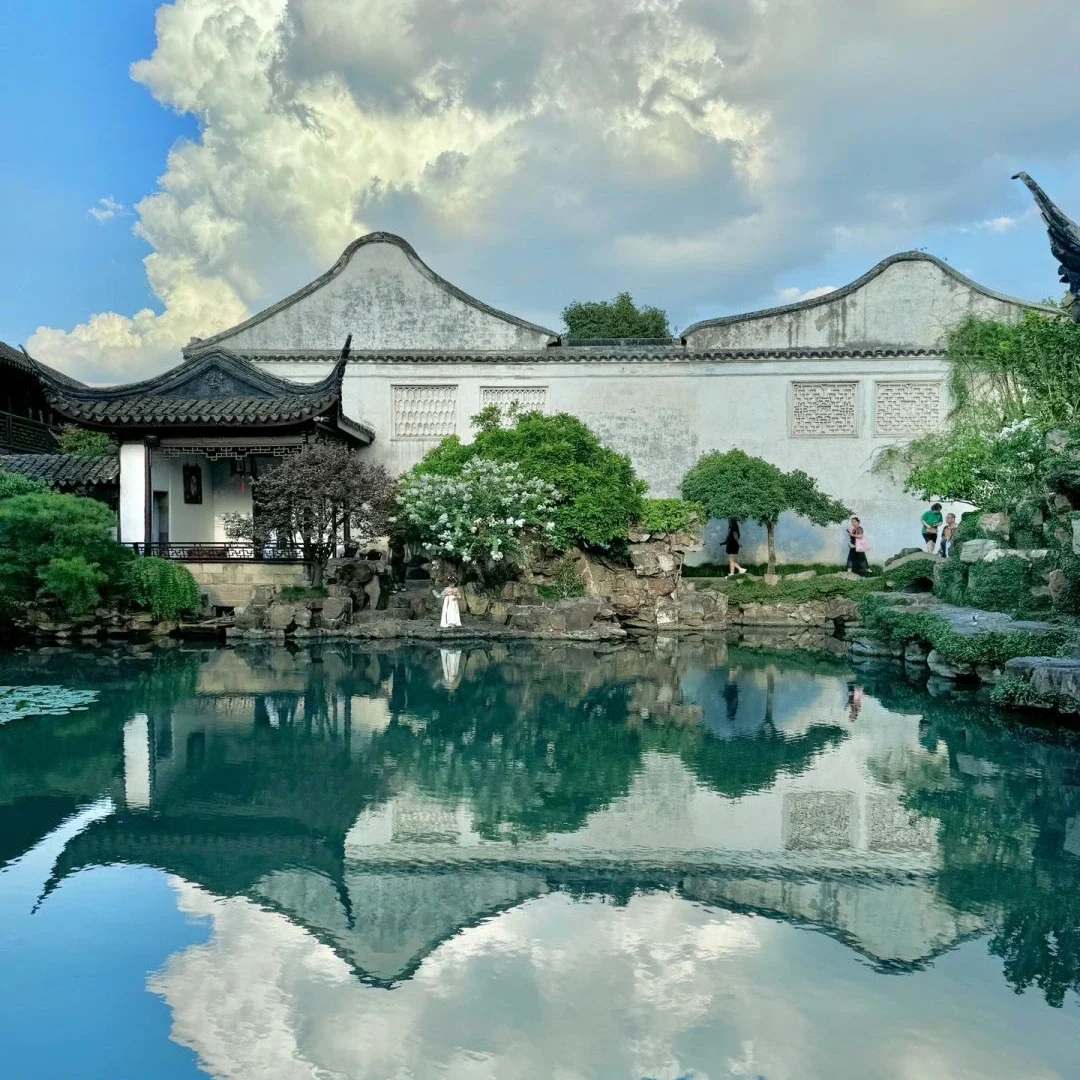
Classical Gardens Of Suzhou.
Tickets: Prices, Booking, and Tips
Visiting the Classical Gardens of Suzhou is an enchanting experience that transports you to a world of tranquility and natural beauty. To enhance your visit, it’s essential to be informed about ticket options, prices, and booking procedures. Below is a summary to help you plan your visit smoothly.
| Ticket Type | Price (CNY) | Includes |
|---|---|---|
| Adult Ticket | 70 | Entry to one of the classical gardens |
| Discounted Ticket (Student) | 35 | Entry for full-time students with valid ID |
| Senior Ticket (Over 60) | 35 | Entry for seniors with valid ID |
| Combo Ticket (3 Gardens) | 180 | Entry to three selected gardens |
| Guided Tour Package | 300 | Entry, guided tour, and lunch option |
Booking Information
Bookings can be made through the official websites of individual gardens or via popular travel platforms. To ensure a hassle-free experience, it is highly recommended to book your tickets in advance, especially during peak seasons (spring and fall) when the gardens attract many visitors.
Many gardens offer special discounts for online bookings, so take advantage of these deals when planning your visit. If you’re considering a guided tour, booking ahead allows you to secure your spot and select your preferred time slot.
Tips for Your Visit
- Plan Your Itinerary: With over a dozen gardens to explore, consider dedicating at least three days to immerse yourself fully in the serenity of Suzhou’s classical gardens.
- Visit Off-Peak: To enjoy a quieter experience, try visiting lesser-known gardens or plan your visit during weekdays.
- Dress Comfortably: Wear comfortable shoes as you’ll be strolling through beautiful, yet expansive landscapes.
By preparing in advance, you can make the most out of your journey through these stunning landscapes that have earned UNESCO World Heritage status. Enjoy the beauty of Suzhou’s classical gardens!
How to Get There: A Complete Transportation Guide
Traveling to the Classical Gardens of Suzhou
The Classical Gardens of Suzhou, renowned for their exquisite beauty and cultural significance, are a must-visit for any traveler exploring China. This guide will help you navigate your journey to these enchanting gardens, whether you’re arriving from a major city or getting around Suzhou itself.
From the Nearest Major City
Arriving from Shanghai
Suzhou is conveniently located approximately 100 kilometers (about 62 miles) west of Shanghai, making it easily accessible for day trips or longer visits.
- By Train:
- High-Speed Train: The most efficient way to reach Suzhou from Shanghai is by high-speed train. Trains depart frequently from Shanghai Hongqiao Railway Station and arrive at Suzhou Railway Station.
- Duration: Approximately 25-30 minutes.
- Cost: Prices range from ¥45 to ¥75 ($7 to $12) depending on the class of service.
-
Tip: Book tickets in advance during peak travel seasons.
-
By Bus:
- Long-Distance Buses: Buses run from various locations in Shanghai, including Shanghai South Bus Station.
- Duration: Approximately 1.5 to 2 hours, depending on traffic.
- Cost: Around ¥30 ($5).
-
Tip: Check the bus schedules ahead of time as they can vary.
-
By Car:
- Rental Car or Taxi: Renting a car or taking a taxi is another option for those preferring a more private travel experience.
- Duration: Approximately 1.5 hours, depending on traffic conditions.
- Cost: Taxi fares may be higher, usually starting around ¥500 ($75) for the trip.
Getting Around the Scenic Area
Once in Suzhou, exploring the Classical Gardens can be done conveniently through various modes of transportation:
- Walking:
-
Suzhou’s gardens are best explored on foot, allowing you to appreciate the intricate designs and serene landscapes at your own pace. Many gardens are located close to one another, particularly in the city center.
-
Public Transport:
- Buses: Suzhou has an extensive bus network that connects major attractions. Buses are inexpensive, with fares usually starting around ¥2 ($0.30). Look for routes that specifically mention the gardens or nearby landmarks.
-
Metro: Suzhou Metro Line 1 connects key areas and is an efficient way to reach some gardens. The Lingering Garden and Humble Administrator’s Garden are both accessible via the metro.
-
Bicycles:
-
Renting a bicycle is a delightful way to traverse the city. Many bike-sharing programs operate in Suzhou, allowing you to pick up and drop off bikes at various locations. Rates typically start at ¥1 ($0.15) for the first hour.
-
Taxis and Ride-Sharing:
-
Taxis are readily available and can be a convenient option, especially if you’re visiting multiple gardens in one day. Ride-sharing services like Didi are also popular and can be more cost-effective than traditional taxis.
-
Guided Tours:
- Consider joining a guided tour that includes transportation. Many tours offer private vehicles and knowledgeable guides to enhance your experience, with prices typically starting around ¥800 ($120) for a full day, including several garden visits.
Conclusion
The Classical Gardens of Suzhou are easily accessible and well-connected, making it simple for international travelers to experience their beauty. Whether you choose to arrive by train from Shanghai or navigate the charming streets of Suzhou on foot, the journey will be as rewarding as the destination itself. Enjoy the tranquility and artistic splendor that these UNESCO-listed gardens have to offer!
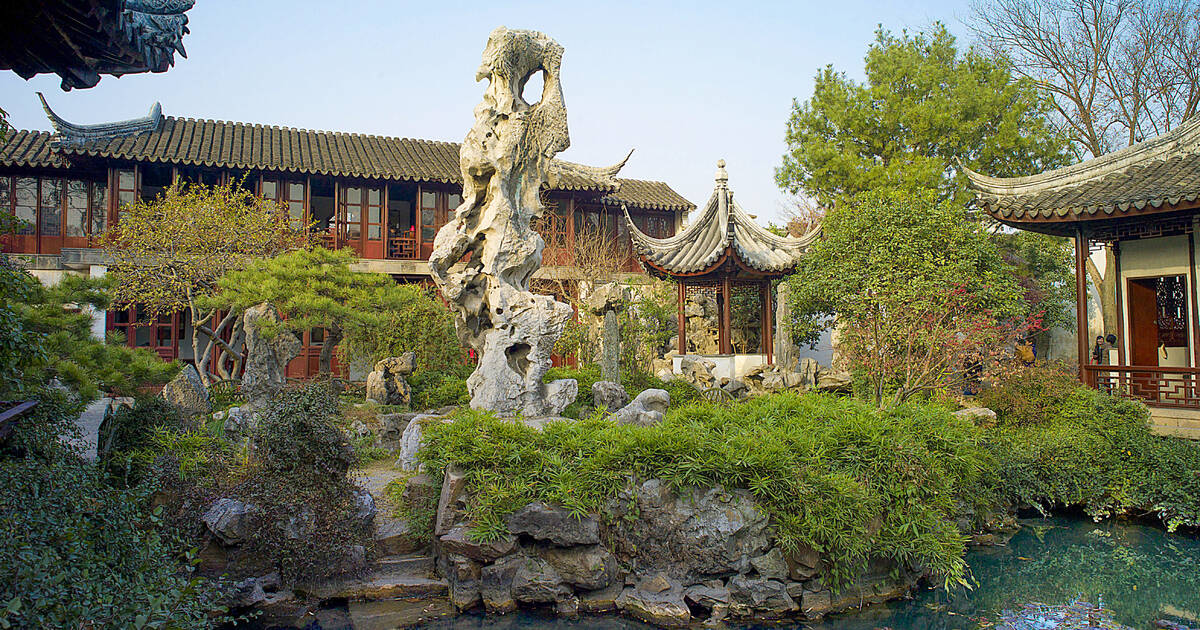
Classical Gardens Of Suzhou.
Local Cuisine and Accommodation Nearby
Exploring the Classical Gardens of Suzhou is not just about witnessing the stunning landscapes and architectural elegance; it’s also an opportunity to indulge in the rich local cuisine and discover a range of accommodation options that cater to different preferences.
Savoring Suzhou’s Culinary Delights
While wandering through these historical gardens, don’t miss the chance to try some of Suzhou’s signature dishes:
-
Sweet and Sour Mandarin Fish (糖醋桂鱼): This iconic dish features a fresh fish, typically mandarin fish, that is fried to a golden crisp and then coated in a sweet and tangy sauce. The combination of flavors and textures is a delightful highlight of Suzhou’s culinary scene.
-
Suzhou-style Dumplings (苏州小笼包): Known for their delicate wrappers and juicy fillings, these dumplings are a must-try. Often filled with pork and flavored with ginger and scallions, they are typically served with a side of vinegar for dipping. Enjoying them steaming hot is an experience you won’t want to miss.
-
Braised Pork Belly (红烧肉): This dish is a rich and savory representation of local flavors. The pork is slow-cooked until tender in a mixture of soy sauce, sugar, and spices, creating a melt-in-your-mouth experience that beautifully embodies the essence of Suzhou’s home-style cooking.
-
Noodles with Soy Sauce (炸酱面): A simple yet flavorful staple, this dish consists of wheat noodles topped with a savory sauce made from fermented soybeans and minced meat. It’s a comforting meal that reflects the region’s culinary heritage.
Where to Stay
Luxury Accommodation
- Suzhou Shangri-La Hotel: Nestled along the banks of Jinji Lake, this luxurious hotel offers stunning views and impeccable service. Guests can enjoy a spa, fine dining, and spacious rooms, making it a perfect retreat after a day of exploring the gardens.
Boutique Hotels
- Pan Pacific Suzhou: This charming hotel combines modern amenities with traditional Suzhou architecture. Located near the city’s famous gardens, it offers beautifully designed rooms and personalized service, ideal for travelers seeking a unique experience.
Budget-Friendly Options
-
GreenTree Inn Suzhou Guanqian Street Hotel: For those on a budget, this hotel provides comfortable accommodations at an affordable price. Its central location makes it easy to access the gardens and nearby attractions, ensuring you don’t miss out on any of the city’s treasures.
-
Motel 168 Suzhou Garden: Another great budget option, this motel offers clean and simple rooms in close proximity to the attractions. With friendly staff and essential amenities, it’s a convenient choice for travelers looking to explore without breaking the bank.
In Conclusion
As you immerse yourself in the serene beauty of Suzhou’s classical gardens, be sure to indulge in the local cuisine and choose an accommodation that complements your travel style. Whether you’re savoring dumplings or relaxing in a luxurious hotel, Suzhou promises an unforgettable experience that resonates long after your visit.
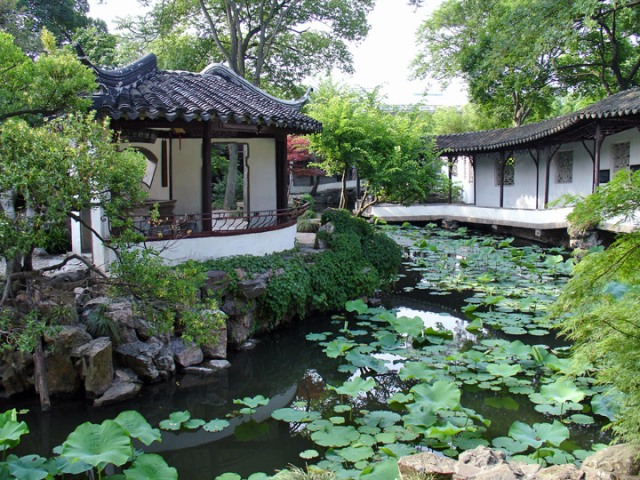
Classical Gardens Of Suzhou.
Frequently Asked Questions
Frequently Asked Questions
-
Is the Classical Gardens of Suzhou suitable for children and the elderly?
Yes, the gardens are designed to be accessible for visitors of all ages. However, some areas may involve uneven paths and steps, so elderly visitors or those with mobility issues should proceed with caution. Children will enjoy exploring the gardens, but it’s a good idea to keep an eye on them near water features. -
Are there English signs and information available?
Most of the popular gardens feature bilingual signage in both Chinese and English, providing information about the gardens’ history, design, and key features. Additionally, many garden staff members speak basic English and can assist with questions. -
How much time should I plan to spend in the gardens?
To fully appreciate the beauty and intricate design of the gardens, plan to spend at least 2-3 hours in each garden. If you wish to explore multiple gardens in one day, consider allocating a full day to enjoy them at a leisurely pace. -
What is the best time to visit the Classical Gardens of Suzhou?
The best times to visit are during spring (April to May) and autumn (September to November) when the weather is pleasant, and the gardens are adorned with vibrant flowers and foliage. Avoid public holidays if you prefer a quieter experience, as the gardens can get crowded. -
Are there guided tours available?
Yes, various guided tours are available, including private tours that can be customized to your interests. These tours often provide deeper insights into the gardens’ history and architectural significance, making for a richer experience. -
Is there an admission fee for the gardens?
Yes, most of the classical gardens charge an admission fee, which can vary depending on the specific garden. Some gardens may offer discounts for students or seniors, so it’s worth checking in advance. -
Can I take photos in the gardens?
Absolutely! Photography is encouraged to capture the stunning landscapes, beautiful plant life, and unique architecture. However, be respectful of other visitors and refrain from using flash photography in more tranquil settings. -
Are there dining options available nearby?
Yes, there are several dining options near the gardens, ranging from casual eateries to more upscale restaurants. You can enjoy authentic Suzhou cuisine or grab a quick snack as you explore the area. Many gardens also have small cafes for light refreshments.
Final Thoughts on Your Trip
As you prepare to leave the enchanting Classical Gardens of Suzhou, take a moment to reflect on the serene beauty you’ve experienced. The harmonious blend of rocks, water, and flora invites you to slow down and appreciate the artistry that has flourished here for centuries. Whether you wandered through the bustling corridors of the renowned gardens or discovered the hidden gems of tranquility, each moment spent in these verdant havens offers a glimpse into the soul of Chinese culture and philosophy.
Remember, Suzhou’s gardens are not just places to visit; they are experiences to savor. The reflections of flowers in tranquil waters and the timelessness of the stone pathways serve as gentle reminders of the beauty in simplicity and the importance of finding peace within oneself.
As you move forward on your journey, carry with you the spirit of these gardens—a spirit of reflection, harmony, and connection to nature. May your adventures continue to inspire you to seek out the beauty in every corner of the world, just as the Classical Gardens of Suzhou have done for so many before you. Safe travels!